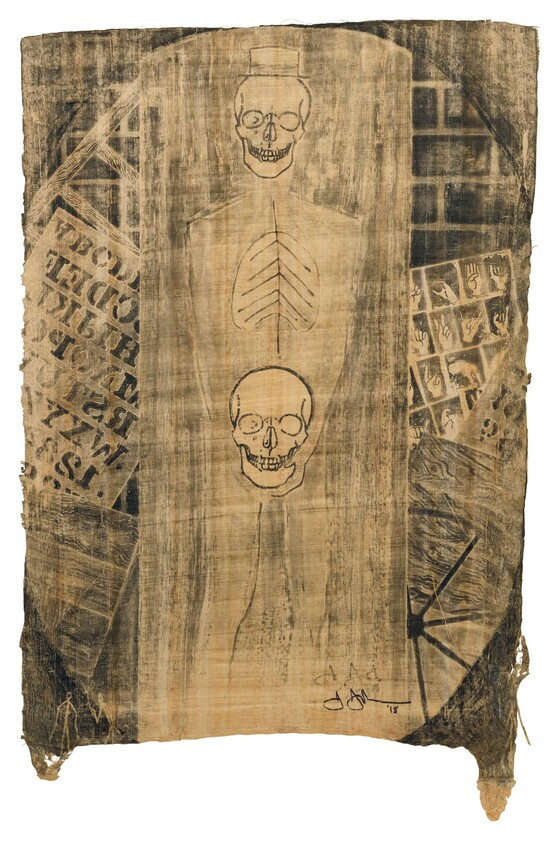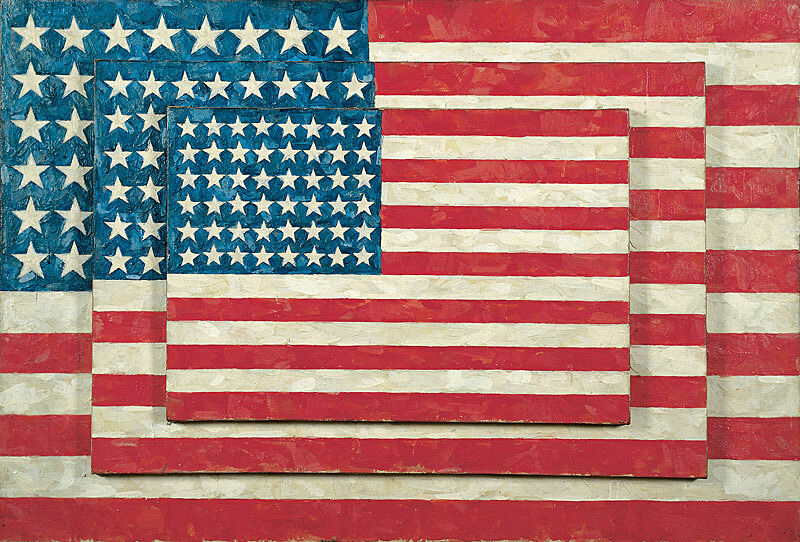Map
Sept 24, 2021
0:00
Map
0:00
Narrator: The politics of Johns’s maps and flags have always been hard to pin down. Are they patriotic? Ironic? Quietly critical? Johns never tells us. As Jaune Quick-to-See Smith points out, our reading of the work depends on our perspective.
Jaune Quick-to-See Smith: Let’s say, if you’re Native American, the map holds very distinct feelings. It’s Turtle Island. It’s Indian country. It’s called by names other than an American map. When you look at the map, you see tribal lands.
When we see a U.S. map, we see stolen land, land that’s been taken away illegally. We see the tracks of genocide, the Trail of Tears, all of us have a story like that with our tribes. We can’t look at a map without having some emotion or some feeling about the land because everything in our lives, all of our stories, all of our teaching stories, all of our stories about where we come from; all are related to this map.
I’ll be interested in seeing that, not that anything should be taken away from [Johns] or his stature should be changed. I’m not saying that. I’m just saying that there are other voices that can be included in the conversation, especially around these icons.


